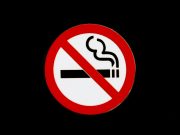A previous study, “How Has the Availability of Snus Influenced Cigarette Smoking in Norway?”, has shown that as snus rose in popularity, from 9% to 33% between 1985 and 2013, smoking rates dropped from 50% to 21%. Politico said that nowadays in Norway, snus is used by approximately 25% of men and 10% of women.
This study also revealed that men and women choose different smoking aids. With men preferring snus at 21%, versus 12% of women. While women (at 15%) preferred smoking cessation apps versus 6% of men. On the other hand, snus was found to be the most effective cessation aid.
The EU remains resistant to safer nicotine alternatives
Meanwhile the EU remains divided about the product. Sweden remains the only EU country where snus is legal, and non coincidentally it is also the only country which has a achieved the much sought after smoke free status. This poses a problem for conservatives in the EU who would like to ban or heavily tax the product.
During an event held last May on World No Tobacco Day, “Recipe for a Smoke-Free Europe: Learnings from the Swedish Experience,” three MEPs: Tomislav Sokol of the European People’s Party (EPP) group, Sara Skyttedal, also from the EPP, and Johan Nissinen from the European Conservatives and Reformists (ECR) group, discussed snus extensively. Together with a group of researchers from global network We Are Innovation, the MEPs described the successful strategy employed by Sweden, which consists of a holistic approach embracing tobacco harm reduction.
In 2022, Skyttedal brought the fight to the European Commission. “If the Tobacco Products Directive is to be revised to take account of the fight against cancer, does the Commission share the view that the EU needs to change its regulation of snus?” Skyttedal asked EC Commissioner Stella Kyriakides.
In response to the MEP’s arguments, Kyriakides said that the EC’s stance remains unchanged as snus and other oral tobacco products have been linked to cancer and other adverse health effects.
The commissioner’s response prompted a strong reaction from Skyttedal, who pointed out that actually most snus studies found little or no links to cancer. She went on to cite the Lancet’s Global Burden of Diseases as well as a 2020 study published in the Scandinavian Journal of Public Health, both of which concluded that in fact there is no evidence to suggest a link between snus and cancer.
In fact, as the MEP rightly highlighted, snus has not only led to Sweden boasting the lowest smoking rates in Europe, but also to reducing Sweden’s tobacco-related deaths by half the EU average, despite leaving the overall tobacco usage on par with the EU average.
Perceptions on smokeless tobacco products in the U.S.
Meanwhile a recent study published in PLoS One surveyed young individuals in the United States about their awareness, perception and likelihood to use nicotine pouches (NPs) and other smokeless tobacco products such as snus.
Titled, “Awareness, susceptibility, and use of oral nicotine pouches and comparative risk perceptions with smokeless tobacco among young adults in the United States,” the study examined the awareness/use of and susceptibility to NPs among young adults in the US aged between 18 and 25, who were asked to complete an anonymous 20-minute online survey between September 2021 and October 2021.
The compiled responses indicated that of the 609 subjects included in the study, 10.3% had never used NPs was 10.3%, which was lower than that of other tobacco products. A total of 41.5% of subjects knew about NPs and 23.5% would consider using them in the future.
Moreover, the 10% rate of NP use was higher in young adults than prior estimates in smokers, high school students, and people between 18-20 years of age at 5.6%, 3%, and 5.2%, respectively. The researchers concluded that young adults had more awareness and were more favorable perceptions of NPs.













